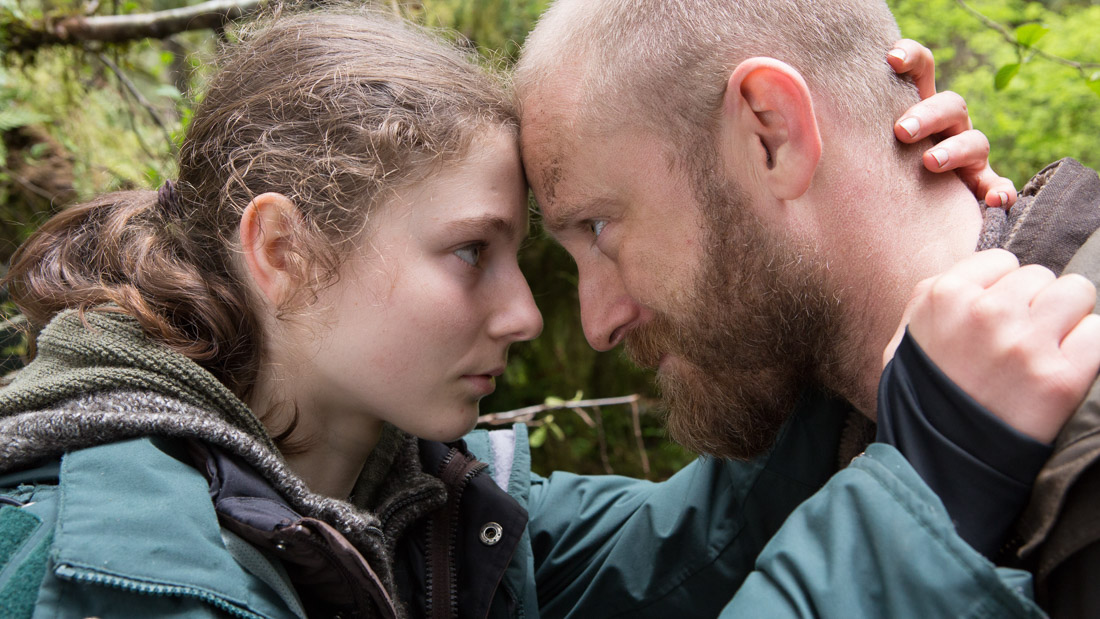Seven years ago, Debra Granik shook the film world with “Winter’s Bone,” a film that premiered at Sundance, winning the Grand Jury Prize on its way to four Oscar nominations, including one for its instant star Jennifer Lawrence. Granik is back this year with “Leave No Trace,” an even better film overall, and my favorite film of this year’s festival so far. It’s a delicate story of two people on the fringe of society that never once feels manipulative, and lands with an emotional wallop. Once again, Granik introduces us to a kind of family that cinema rarely captures believably, and she does so with a style that’s both lyrical and realistic at the same time, anchored by a pair of unforgettable performances.
Those come from Ben Foster as Will and newcomer Thomasin Harcourt McKenzie as Will’s teenage daughter, Tom. They live entirely off the grid in a nature reserve not far from Portland, Oregon. The opening scenes of “Leave No Trace” detail regular life for Will and Tom, building fires for warmth or to cook nearby mushrooms. Shot by Michael McDonough (“Sunset Song”), these opening scenes establish the film as one that beautifully straddles the line between the realistic and the lyrical. The compositions don’t feel as purposefully poetic as a Malick film, for example, but there’s something about the way McDonough captures light through the trees or the vibrant green of the world around Will and Tom that’s gorgeous, establishing the woods not so much as a place of danger but one in which these two feel comfortable.
The pair does go to the city when needed to get food or meds from the VA hospital, which Will then sells to other nearby homeless vets. They also run drills with regularity, with Will teaching Tom how to hide if anyone comes near their camp. Of course, one day, they’re caught by the authorities, who instantly want to send Tom to school and find work for Will.
Both Tom and Will are thrown into a social services system that seems to honestly want to help them. Tom is clearly coming into her own, reaching a point of independence in which she may no longer want to move from camp to camp with her father. Very gradually, Granik, who also wrote the film, reveals that Will suffers from PTSD, and it’s the reason he simply can’t trust a system or stay still for very long. And yet Will is never portrayed as a villain. He’s a good father, as evident in how wonderfully Tom has turned out. But he may not be able to hold onto her forever.

With Will, Granik and Foster very wisely choose to portray most of his PTSD as an internal turmoil instead of a cinematically exaggerated condition. It’s in Foster’s eyes and his quiet delivery that this character instantly feels genuine. And we also immediately believe the relationship between Will and Tom, which is so essential to why the film works. Rarely have two performers faded into the characters of father and daughter more believably than here. There’s something about the way these two people communicate and clearly love each other that’s palpable, and that emotional connection is the undercurrent that drives the entire narrative. Will wants what’s best for Tom, but he’s incapable of seeing her to the next phase of her life, partially trying to hold on to the fragile existence they have, although Foster heartbreakingly conveys his realization that she will inevitably go down paths he can’t follow.
And then there’s Thomasin Harcourt McKenzie, who gives the kind of breathtakingly confident debut that reminds one of Lawrence in Granik’s breakout or Kate Winslet in “Heavenly Creatures.” It’s a mesmerizing performance, one that doesn’t seem like it includes a single false note. Granik filmed “Leave No Trace” chronologically and it allows McKenzie to very subtly capture the arc of the character, primarily through body language. It’s not that the Tom of the early scenes is a shy child—she seems confidently a partner of her father’s more than a typical kid—but we see Tom change ever so slightly, often under the warmth of the kindness of strangers trying to help them, and McKenzie handles every single beat. She’s that rare breed of actress who feels like she’s purely in the moment, responding to what’s in front of her, feeling emotions for the first time, conveying internal dialogue through her eyes, her body, a quiver in her chin. It reminded me of seeing Timothee Chalamet last year at Sundance in “Call Me By Your Name.”
The Chalamet comparison also brings to mind other truly memorable experiences in my five years covering Sundance, including the world premieres of that film, “Boyhood,” “Manchester by the Sea,” “Before Midnight,” and “A Ghost Story,” all movies that would end up on my top ten in their individual years. The story of Sundance 2018 has been more muted, with most journalists agreeing it has been a year of “good” films but lacking in “great” ones. The only film that has broken this for me is Debra Granik’s “Leave No Trace,” and I can’t wait to see it again, and for the world to see it.












